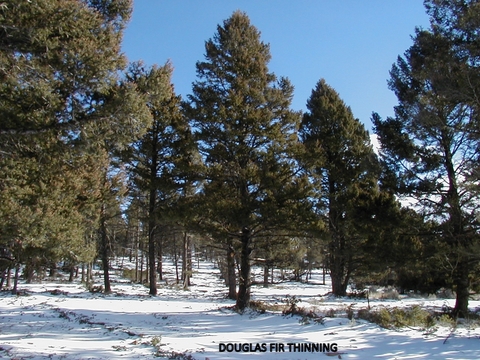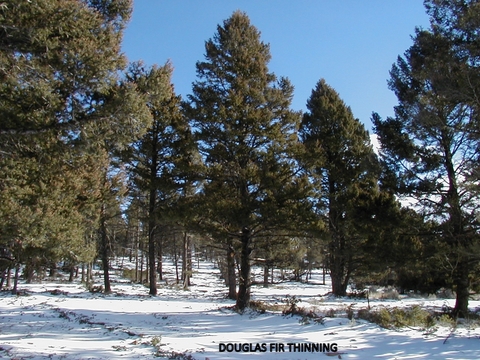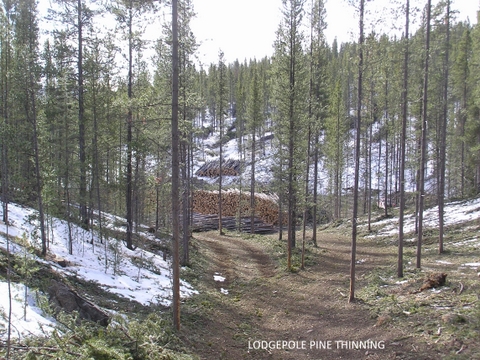These pictures show examples of several harvesting prescriptions in different types of timber stands.

This Douglas Fir thinning is a variety of older and younger trees left on a fairly close spacing. The larger trees will provide wind protection and produce additional seed while the younger trees are left on a spacing that allows them to take full advantage of the sun and rain without being stressed by close-growing competition. These younger trees will “release” and begin to grow much faster and have more resilience to insects and diseases.
The Douglas Fir shelterwood was originally a mature stand of trees with very little reproduction coming up underneath. Mature, healthy trees were left on a wide spacing. These provide seed for the new forest and the wide spacing allows adequate sunlight to the ground to promote seed germination.


Lodgepole Pine thinning was originally a very thick timber stand of small to saw log size trees. Lodgepole Pine is very susceptible to wind throw due to its shallow root system. It also has very thin bark and extra care must be taken to avoid damaging the leave trees. The result of this harvest will be trees that will “release” as in the Douglas fir thinning above.